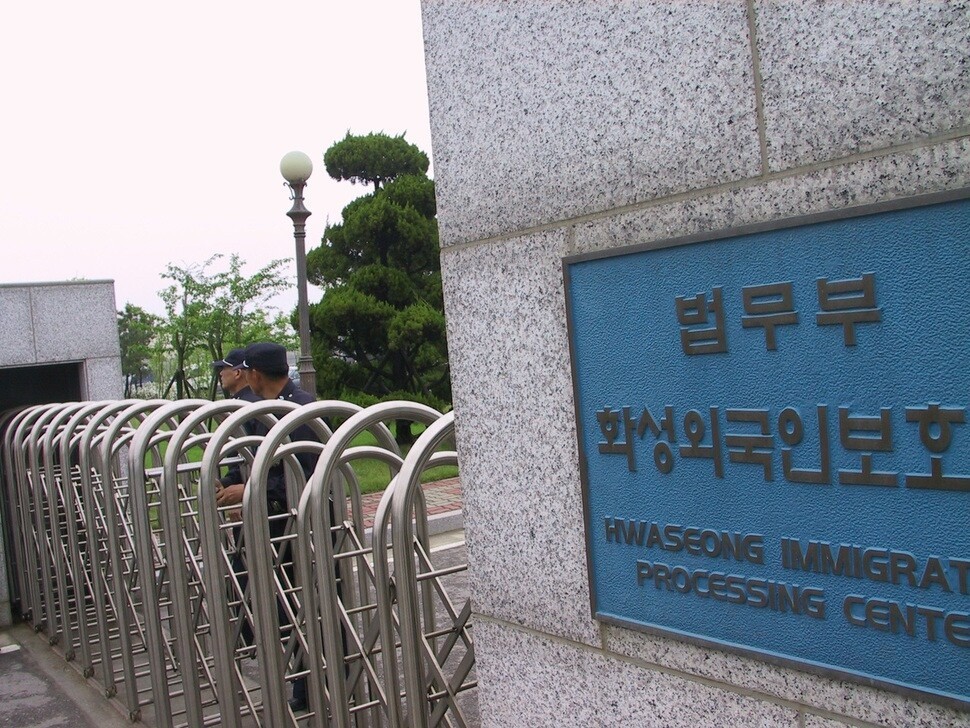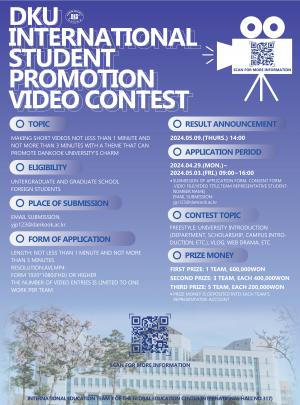The human rights violations of undocumented immigrants at detention centers are on the rise since last year. Last September, CCTV (closed-circuit television) footage spread across the internet showing a Moroccan man with his arms and legs tied behind his back held in a solitary cell. He was held like this for more than four hours, wearing headgear and tied up with box tape and cable ties. This type of inhumane treatment is not uncommon at the centers and calls for change have so far gone unanswered.
 |
| ▲ A Moroccan man tied his arms and legs behind his back held in a solitary cell. (Photo from The Kyunghyang Shinmun) |
There are three detention centers in Korea: Hwaseong in Gyeonggi-do, Cheongju in Chungcheongbuk-do, and the Yeosu Immigration and Foreign Affairs Office. They were created as temporal protection facilities where illegal immigrants, who have been ordered to leave the country, are held while they prepare for deportation. They were intended to offer the detainee time to deal with tasks such as disposing of remaining assets, placing their affairs in order, such as dealing with personal relationships, preparing passports, purchasing flight tickets, and conducting the necessary COVID-19 examinations. However, this video, along with other cases that have entered the public spotlight, has raised concerns that these protective custody sites are acting more and more like corrective facilities and the system needs an overhaul. The Ministry of Justice, the government body responsible for the facilities, has promised corrective action, but the situation still has not improved leaving many frustrated by the slow pace of change.
In response to the widespread criticism of the action of the Hwaseong Immigration Processing Center in the case of the Moroccan man, a representative defended the staff saying they had no choice to respond with such drastic measures since the man had caused a disturbance and tried to harm himself. The victim, who came to Korea in 2017, registered for refugee applications twice, but both times he was rejected. At the time of his arrest, he was pursuing legal action to review his case which qualified him for an extended stay as a refugee applicant. However, he missed the deadline for his extension application, so he was detained and remanded to the Hwaseong Immigration Processing Center. Since the story came to light, the victim has come forward, accusing the facility officials of several harsh actions, such as being held in a stranglehold and tied down using handcuffs, rope, headgear, and box tape. Upon viewing the detention center video, the National Human Rights Commission of Korea recommended the immigration office use restraints only when necessary and in a legal manner.
In February, as the number of COVID-19 patients increased, and one foreigner in custody along with two local employees tested positive for the virus, people being held were released from protection at the Hwaseong Immigration Processing Center to prevent the virus from being further widespread. Those that qualified for the temporary cancellation of hold had to pay a deposit and meet identity guarantees under the Immigration Control Act. However, the freed immigrants were mostly undocumented and had already been cut off from the outside world. They had no phone and could not get any work due to their status. They were left to fend for themselves despite having their hands tied by their status.
Since the pandemic started, human rights organizations that help refugees demanded emergency response measures to address the poor conditions at the centers such as overcrowding of detainees, insufficient quarantine policies and concerns relating to underlying diseases of long-term detainees, but the situation has not improved. Despite criticism from the press and civic groups, there have been no concerted efforts to improve conditions.
The Ministry of Justice promised to revise its decision to introduce special protective devices such as chair and bed binds, handcuffs, rope, head and ankle protectors, and straight jackets, at all its detention facilities in Korea. The tools are terrifying detainees and are too often being used in a manner that contravenes their human rights. The body-binding chair secures the detainee as if they are to be executed, terrifying the victims. The Ministry of Justice said new rules will help staff solve problems when suppressing prisoners who make disturbances. With no appropriate training or authority to restrain detainees, staff have reacted in ways they saw fit. The Ministry of Justice also defended their employees saying that under the Immigration Control Act, staff has the authority to take the same measures they did in the case of the Moroccan man, whenever detainees create a disturbance. Critics have pointed out this response comes from a low sensibility of human rights.
Another problem raised by human rights groups is the detention term. In the Hwaseong and Cheongju Immigration Processing Center, 394 people are being held at the facilities and some of them have been there for a year or longer. Compared to other countries, Korea has harsh treatment for its immigrants. Germany never allows immigrants to be held in custody for more than a year, while the United States and Taiwan, do not forcibly confine immigrants with outstanding cases.
 |
| ▲ Detainees at the Hwaseong detention center were shut off from all outside contact. (Photo from Hankyoreh) |
An official at the NANCEN Refugee Rights Center said that the immigration detention policy in Korea is excessively restricting the human rights of foreigners. She said, “The overall authority to order, extend, and cancel an internment is vested with the Minister of Justice. No other institution can intervene with the decision by the Minister of Justice on the matter. Additionally, the reasons given for justification of the internment are expansive and far too easily issued when you consider the impact the order has on a person’s life. It is a flagrant violation of human rights. Moreover, measures to overturn the decision are so restrictive, with some people waiting in custody for more than 4 years, due to the absence of an upper limit in the detention period.” An official also highlighted that the center is operating more like a corrective facility rather than a protective custody location. However, while jails are constructed accounting for long-term stay prisoners, the internment facilities, due to their identity as temporal protection site, are unsuitable for long-term detention. In addition to insufficient medical support, poor diet, short exercise time, detainees were denied access to medicine because of the absence of translators. She added, “To make matters worse, as the COVID-19 pandemic continued, interviews were not permitted, so the detained foreigners could not get any help from outside the facility. Due to the disproportionate use of force and restraint equipment, detainees needed to raise the alarm.” She made clear this is not only a case of violating human rights, but rather a signal to overhaul the system. “After the case drew public interest, the Ministry of Justice promised to prevent the overuse of restraints and solitary confinement, grant opportunities for a detainee to state their case before being held in confinement and offer visitation monitors and education for staff on the appropriate use of confinement measures. However, none were carried out.” She also expressed concerns over the restraints in use. “They reversed their promise to the public and have done nothing to remove these devices from their facilities. We are left to interpret such inaction as a movement to change the protective custody sites to prisons.” She ended the interview by calling for a revision to the immigration detention policy. “First, an internment order must only be issued to those who need to be detained. Internment orders should be carried out with recommendations for departure, or imposing penalties. Also, people with cases that are expected to take a long time to settle, such as refugee applicants, families with children, should not be detained. Detention should only be used in the worst cases, and as little as possible. Last, but not least, the centers should be changed to alternative facilities which do not excessively restrict the freedom of detained foreigners. People being held in the center should be permitted to freely talk to the outside world, using phones or via interviews. They should also be provided with a healthy diet, appropriate medical services, and necessary medications. Overall, it should be reformed to what it used to be and help undocumented immigrants ordered to depart Korea prepare for the departure process.”
Controversies over the treatment of immigrants at Korea’s detention centers have proven that human rights violations are on-going. No matter where a person is from, every human being has basic inalienable human rights which no one can infringe upon. Korea’s policy on undocumented immigrants should be revised to ensure the humane treatment of detainees, and the protection facilities must first and foremost, help undocumented immigrants prepare for their return to their home country. In the 21st century, in a globalization era, a developed country such as Korea must be mindful of systems that tarnish its reputation as a modern democracy and abolish internment under the name of protection.
김서연, 김주예, 최은지 dankookherald@gmail.com

![[Campus Magnifier] Let's Surf the Library!](/news/photo/202404/12496_1765_4143.jpg) [Campus Magnifier] Let's Surf the Library!
[Campus Magnifier] Let's Surf the Library!
![[Campus Magnifier] Let's Surf the Library!](/news/thumbnail/202404/12496_1765_4143_v150.jpg)





